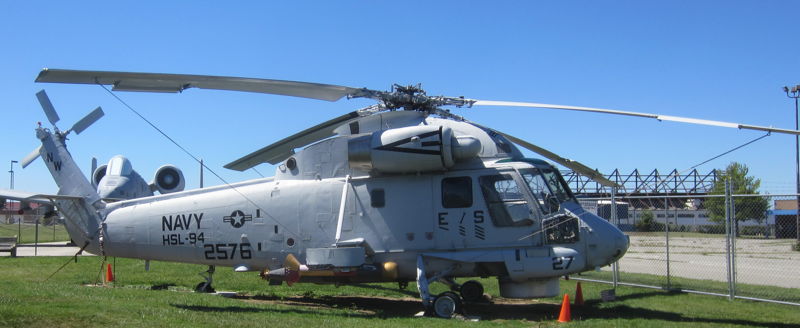Wings of Freedom Aviation Museum
Horsham, PA, Aug 2014
Philadelphia PA Building Photos Thumbnails Buildings Home
Fokker D.VIII
The Fokker E.V was a German parasol-monoplane fighter aircraft designed by Reinhold Platz and built by Fokker-Flugzeugwerke. The E.V was the last Fokker design to become operational with the Luftstreitkräfte, entering service in the last months of World War I. After several fatal accidents due to wing failures, the aircraft was modified and redesignated Fokker D.VIII. Dubbed the Flying Razor by Allied pilots, the D.VIII had the distinction of scoring the last aerial victory of the war. First flight May 1918.
The Museum’s Fokker D.VIII is a scaled replica of the 1918 German aircraft. Built with the intention to fly, control difficulties grounded the aircraft. The builder of the aircraft donated it to Museum in 2006.
Original was built in 1918, this replica in 2006
Photo 22
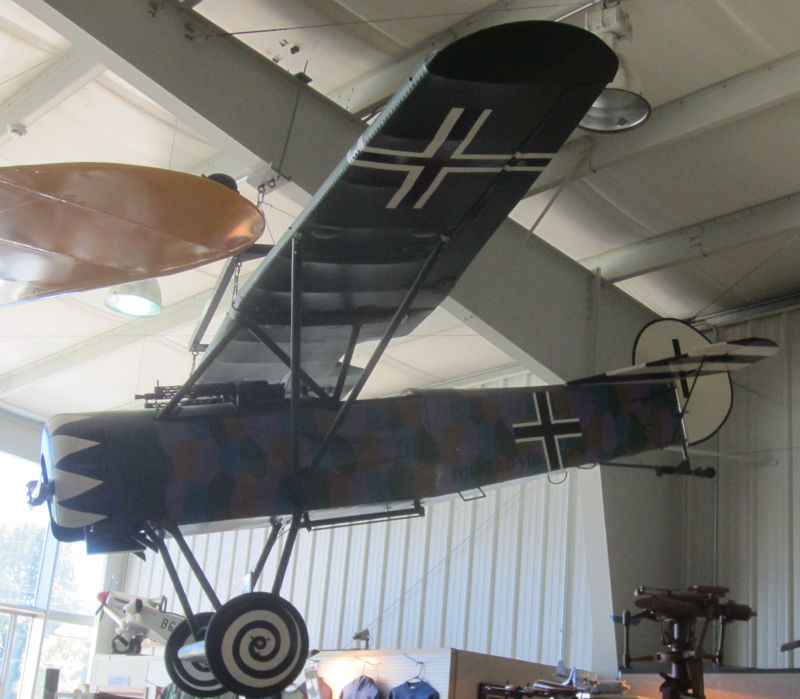
Pitcairn PA-8 Mailwing
Built by Harold Pircairn in 1931 here at Pircairn Field. Designed to carry 1000 lb of mail for the US postal service. Series was PA-5 (1927), PA-6 (1928), PA-7 (1929), PA-8 (1930) with different engines. PA-8 used the Wright J-6 engine; ATC 364.
In 1931, Pitcairn Aviation built the PA-8 Mailwing that is currently on public display at the museum. Shortly after being certified air-worthy in 1931, it was issued the identification mark assignment (#10751) and sold to Eastern Air Transport. Over the next 60 years, this aircraft had multiple owners, before it landed back into the hands of the Pitcairn family. In 1992, Harold Pitcairn’s son Stephen, purchased the aircraft and relocated it to his hangers in Robbinsville, NJ. On June 9, 1998, after a full restoration completed by Mike Posey, President of Posey Brothers, Inc, the aircraft flew again. The aircraft continued to fly until August 2012, when the Pitcairn family gifted this Mailwing to the museum.
Photo 16
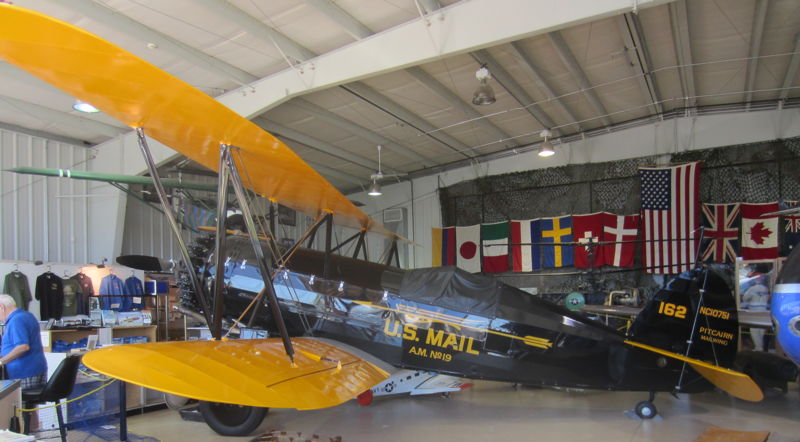
Pitcairn PA-8 Mailwing
Photo 23
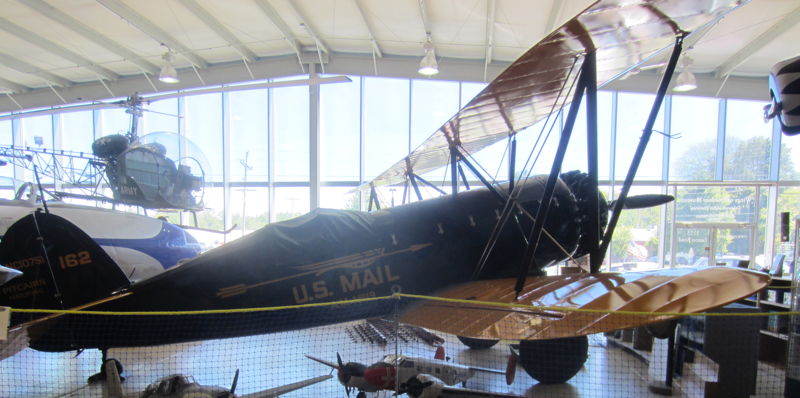
Lockheed P-80C/TV-1 “Shooting Star”
The Lockheed P-80 Shooting Star was the first jet fighter used operationally by the United States Army Air Forces (USAAF). Designed and built by Lockheed in 1943 and delivered just 143 days from the start of the design process, production models were flying in 1945. Designed with straight wings, the type saw extensive combat in Korea with the United States Air Force as the F-80. America's first successful turbojet-powered combat aircraft, it helped usher in the jet age in the USAF, but was outclassed with the appearance of the swept-wing transonic MiG-15 and quickly replaced by the transonic North American F-86 Sabre.
The Museum’s P-80C/TV-1 is Bureau# 33824. This aircraft is one of the oldest in the Museum’s collection. Built in the late 1940s, the Navy received this aircraft in 1948 when the Navy had 50 Air Force P-80Cs transferred to Navy control. This aircraft then served served in multiple states until it arrived here at NAS Willow Grove until it was retired. The Museum restored the aircraft from 2003 to 2005.
Photo 21
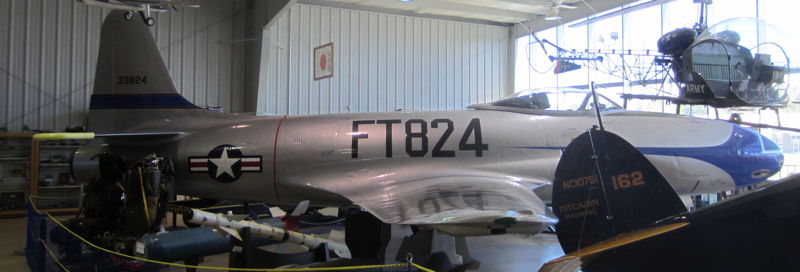
Lockheed P-80C/TV-1 “Shooting Star”
Photo 18
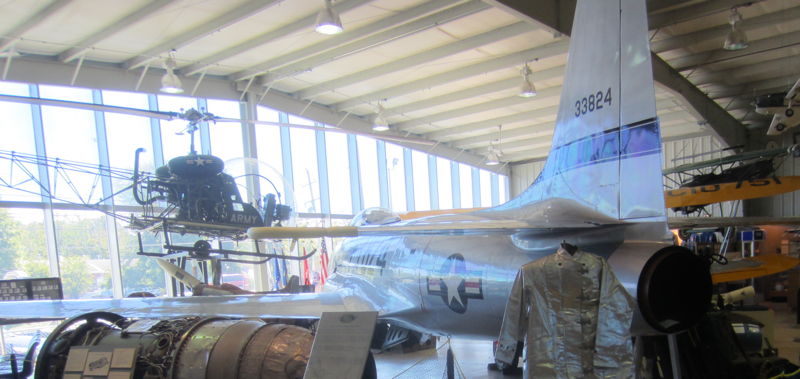
Lockheed P-80C/TV-1 “Shooting Star”
Photo 20
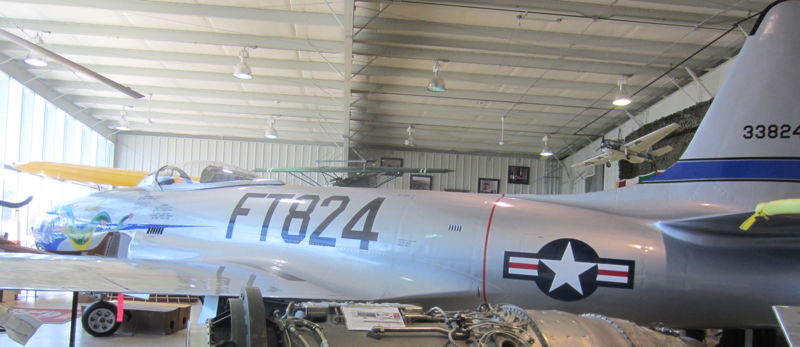
Bell H-13G "Sioux"
The Bell H-13 Sioux was a two-bladed, single engine, light helicopter built by Bell Helicopter. Westland Aircraft manufactured the Sioux under license for the British military as the Sioux AH.1 and HT.2. First flew 12-35. First flight December 1945.
Initially built as the civilian aircraft Model 47, the Army requested Bell militarize the aircraft creating the H-13G. The aircraft’s first combat operations took place in Korea and became known for its role in medical evacuations to M*A*S*H units.
Photo 19
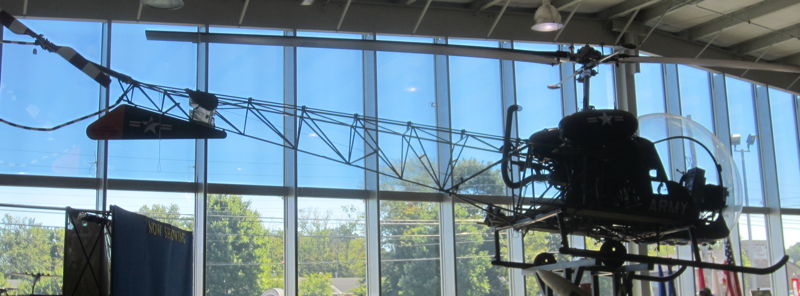
Grumman F9F-2 "Panther"
The Grumman F9F Panther was the manufacturer's first jet fighter and one of the United States Navy's first successful carrier-based jet fighters. A single-engined, straight-winged day fighter, it was fitted with an armament of four 20 mm cannons and could carry a wide assortment of air-to-ground munitions. First flight November 1947.
The Panther was used extensively by the U.S. Navy and the United States Marine Corps in the Korean War. It was also was the first jet aircraft used by the Blue Angels flight team, being used by them from 1949 through to late 1954.
The Museum’s F9F-2 is Bureau# 127120. This aircraft spent the majority of its life at the Naval Air Development Center in Johnsville, PA. These aircrafts, however, first flew combat missions in Korea. They also became the first jet used for the Navy’s “Blue Angel” demonstration team.
Photo 71
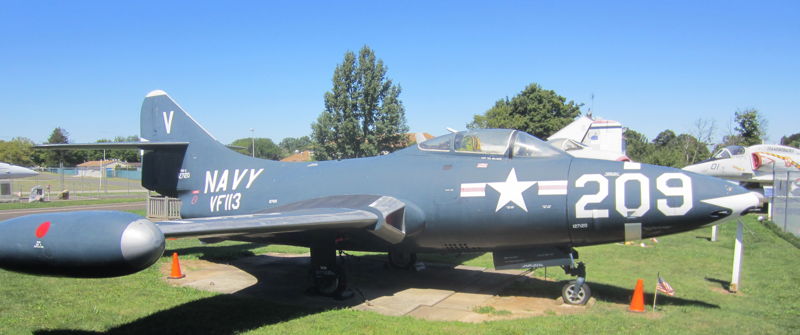
Grumman F9F-2 "Panther"
Photo 73

Grumman F9F-2 "Panther"
Note "Ted Williams" name
Photo 72
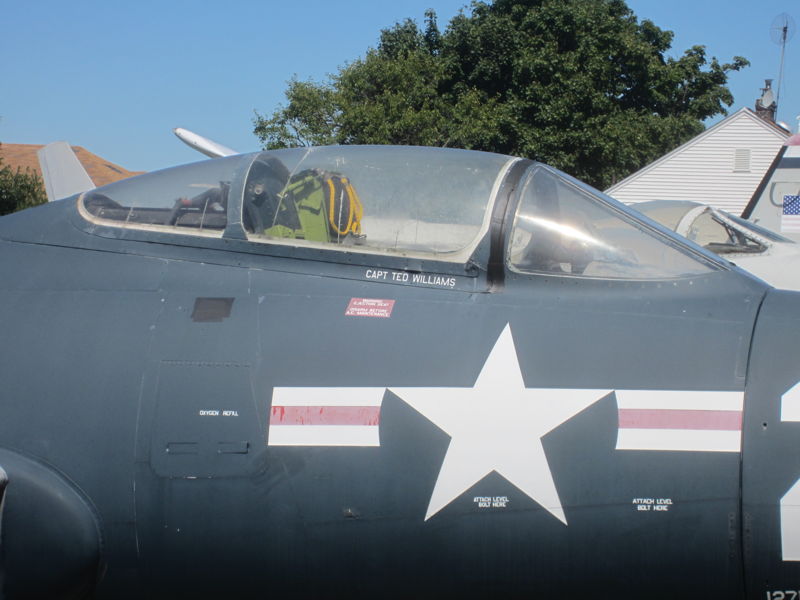
Piasecki HUP-2 "Retriever"
The Piasecki H-25 Army Mule/HUP Retriever was a compact single radial engine, twin overlapping tandem rotor utility helicopter developed by the Piasecki Helicopter Corp. during the late 1940s and produced during the early 1950s. The company changed its name in the 1956 to Vertol Aircraft Corporation and subsequently was bought by Boeing Aircraft Company in 1960, and became Boeing-Vertol. First flight March 1948.
The Museum’s Retriever is Bureau# 128517. This type of aircraft was the result of requirements set by the Bureau of Aeronautics for a utility helicopter based on aircraft carriers. The aircraft served the Navy from June 1952 to April 1963. The Museum acquired the aircraft in 1997 from Dr. Brent Follweiler.
Photo 36
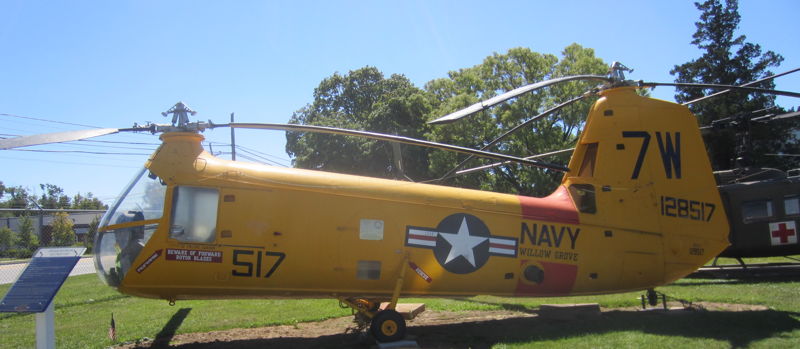
Piasecki HUP-2 "Retriever"
Photo 37

Beechcraft T-34B "Mentor"
The Beechcraft T-34 Mentor is a propeller-driven, single-engined, military trainer aircraft derived from the Beechcraft Model 35 Bonanza. The earlier versions of the T-34, dating from around the late 1940s to the 1950s, were piston-engined. These were eventually succeeded by the upgraded T-34C Turbo-Mentor, powered by a turboprop engine. The T-34 remains in service more than six decades after it was first designed. First flight Dec 1948.
The Museum’s T-34B is Bureau# 143990. The aircraft became the first post-World War II trainer after the Air Force received its first of these aircrafts in 1950. This aircraft arrived at Willow Grove in the mid-1990s and was flown by the Aero Club. The Museum acquired the aircraft following the aircraft’s retirement in 1999.
Photo 48
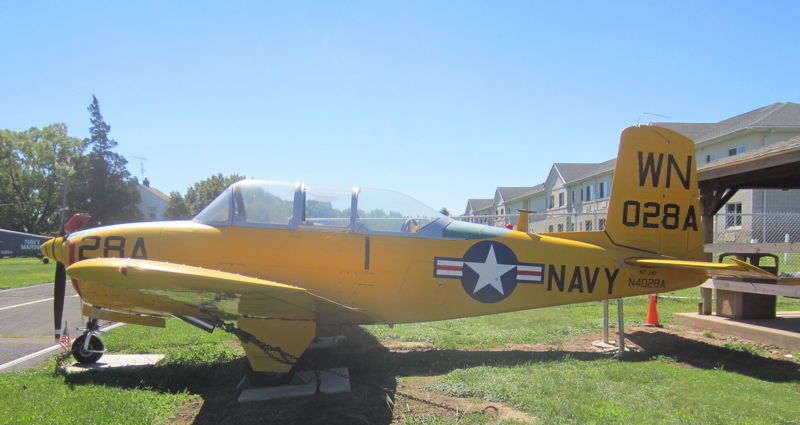
Beechcraft T-34B "Mentor"
Photo 49a
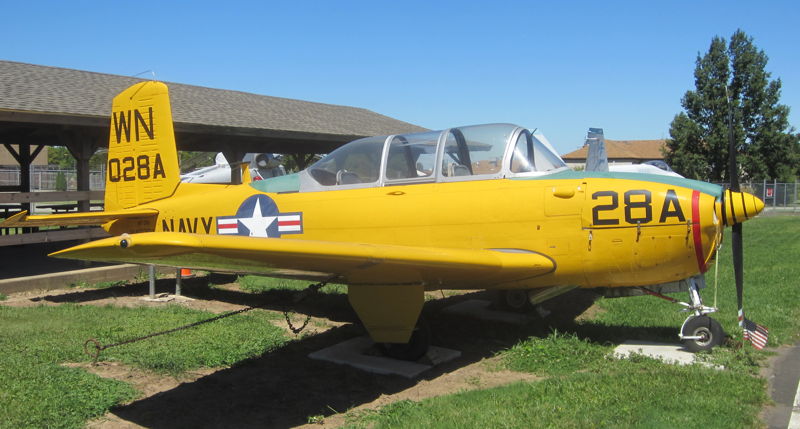
Republic F-84F "Thunderstreak"
The Republic F-84F Thunderstreak was an American-built swept-wing turbojet fighter-bomber. While an evolutionary development of the straight-wing F-84 Thunderjet, the F-84F was a new design. First flight June 1950.
The aircraft on display (Bureau #52-6555) was retired from active duty service in 1962. The aircraft was then used by both the PA and NJ Air National Guard, where it was used for the next several years. In 1971, this aircraft was returned from service with the National Guard. The aircraft then was put on static display at the Bucks County Aviation School where it remained until the school was sold in 2005. In 2006, after the school was sold, the Museum acquired the aircraft. Today the aircraft sits in the markings of the PA Air National Guard.
Photo 26
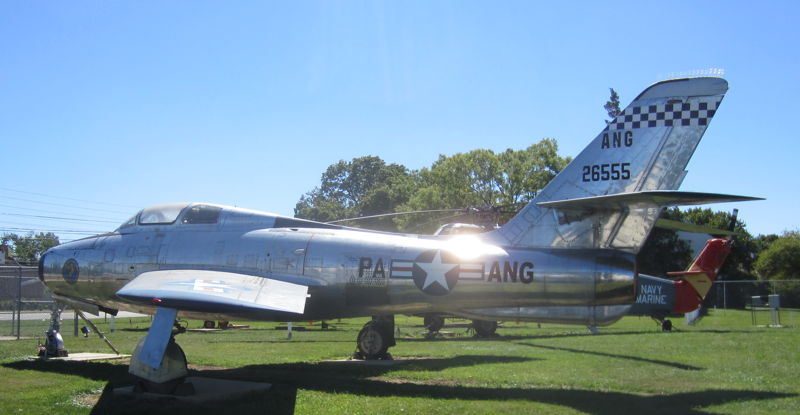
Republic F-84F "Thunderstreak"
Photo 28

Republic F-84F "Thunderstreak"
Photo 29
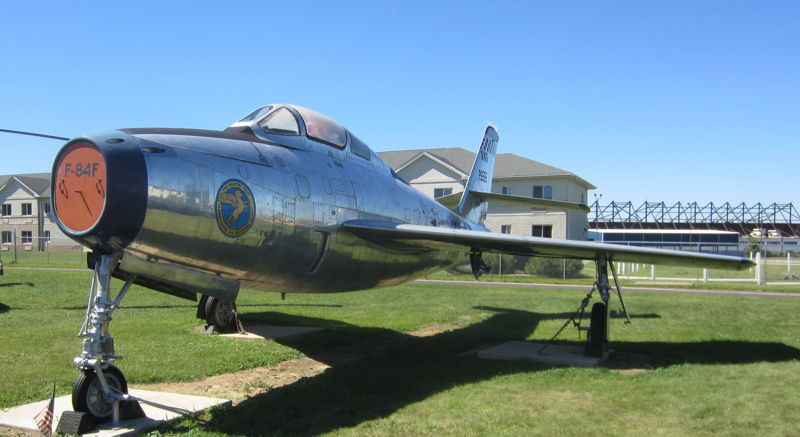
Republic F-84F "Thunderstreak"
Photo 31
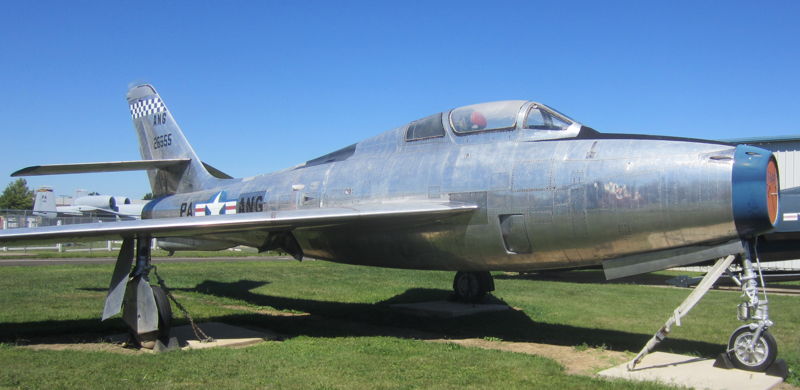
Grumman C-1A "Trader"
The Grumman C-1 Trader was a carrier onboard delivery (COD) variant of the Grumman S-2 Tracker. It was replaced by a similar version of the Northrop Grumman E-2 Hawkeye, the Grumman C-2 Greyhound. First flight December 1952.
Built in 1957, the C-1A Trader was a carrier transport and all-weather trainer. The aircraft on display (Bureau# 146034) was the 64th out of 87 total C-1As built. It saw service with multiple squadrons and ships around the world. The “Trader” became one of three C-1As operated out of Willow Grove by the USS Independence carrier on-board delivery (COD) crew. After this aircraft’s last flight in March 1987, it was placed on display in the northeast corner of Willow Grove base. The Museum acquired the aircraft in late 1987.
Photo 59a
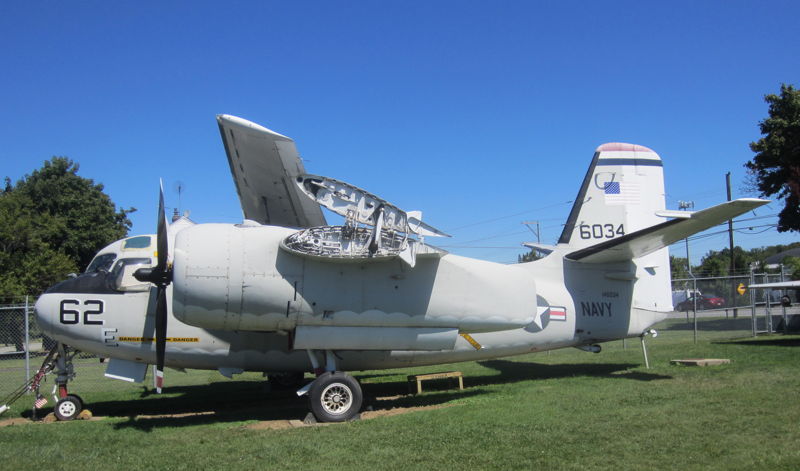
Grumman C-1A "Trader"
Photo 60a

Grumman C-1A "Trader"
Photo 76
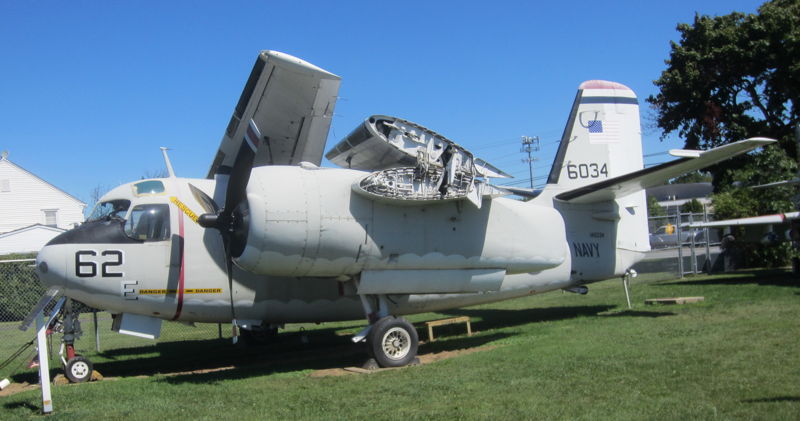
Grumman C-1A "Trader"
Photo 77
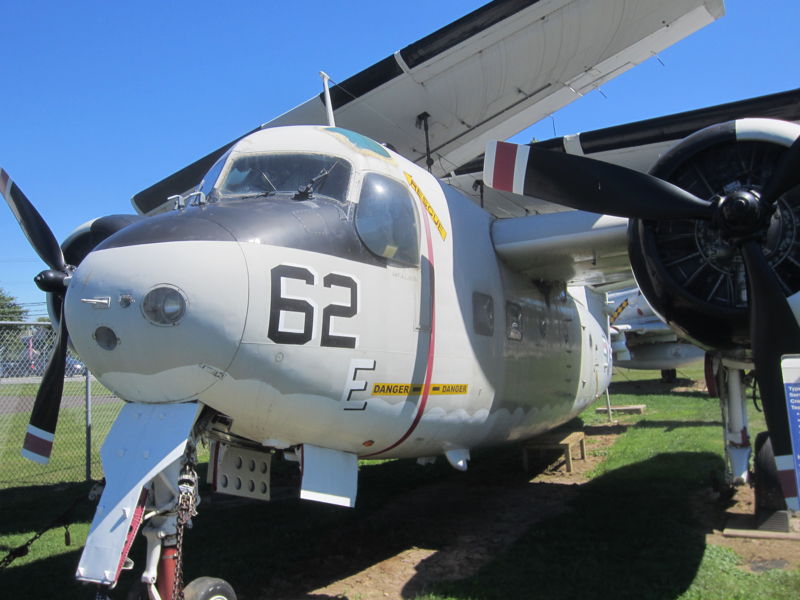
Convair YF-2Y “Sea Dart”
The Convair F2Y Sea Dart was a unique American seaplane fighter aircraft that rode on twin hydro-skis for takeoff. It flew only as a prototype, and never entered production. It is the only seaplane to have exceeded the speed of sound. First flight January 1953.
The Museum’s YF-2Y is Bureau# 135764. The aircraft was part of a series of five aircrafts contracted by the Navy as a new prototype for a seaplane. However, multiple tests determined the aircraft was unreliable and the project was cancelled. This aircraft never saw military service and retired in 1962. The Museum acquired the aircraft in 1987 and put it on display.
Photo 24
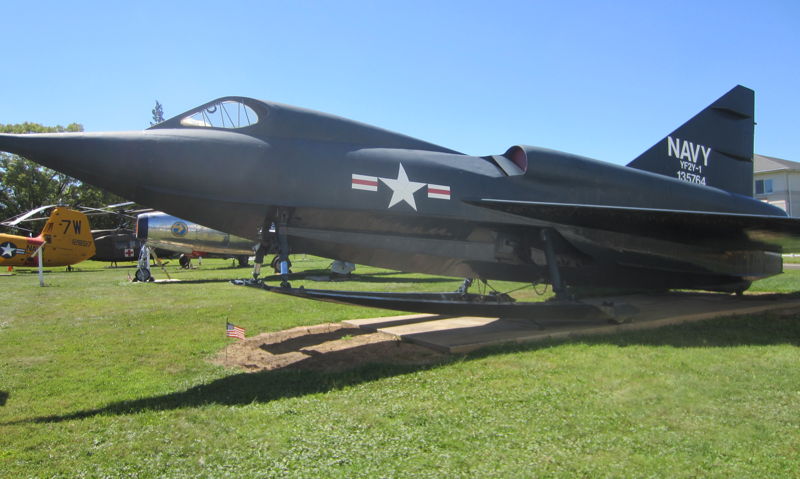
Convair YF-2Y “Sea Dart”
Photo 32
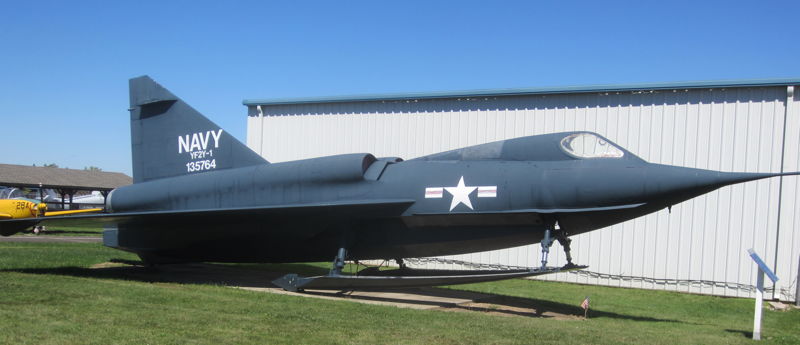
Sikorsky UH-34D “Sea Bat”
The Sikorsky H-34 is a piston-engined military helicopter that was originally designed by American aircraft manufacturer Sikorsky for the United States Navy for service in the anti-submarine warfare (ASW) role. It has seen extended use when adapted to turbine power by the British licensee as the Westland Wessex and Sikorsky as the later S-58T. First flight March 1954.
Various H-34s served, mostly as medium transports, on every continent with the armed forces of twenty-five countries, in roles such as saving flood victims, recovering astronauts, fighting fires, and carrying presidents. As one of the last piston-powered helicopter designs before its replacement by turbine-powered types such as the UH-1 Huey and CH-46 Sea Knight, it would see a remarkably long run of 2,108 H-34s produced between 1953 and 1970.
The Museum’s “Sea Bat” is Bureau# 145694. This aircraft served as both a “Sea Bat” and a “Sea Horse” with the Navy and Marine Corps. Initial flights took place in the mid 1950s and were produced through the 1960s. This specific aircraft began as an SH-34J with anti-submarine warfare gear, but then that technology was stripped. It continued in service til April 1971.
Photo 34
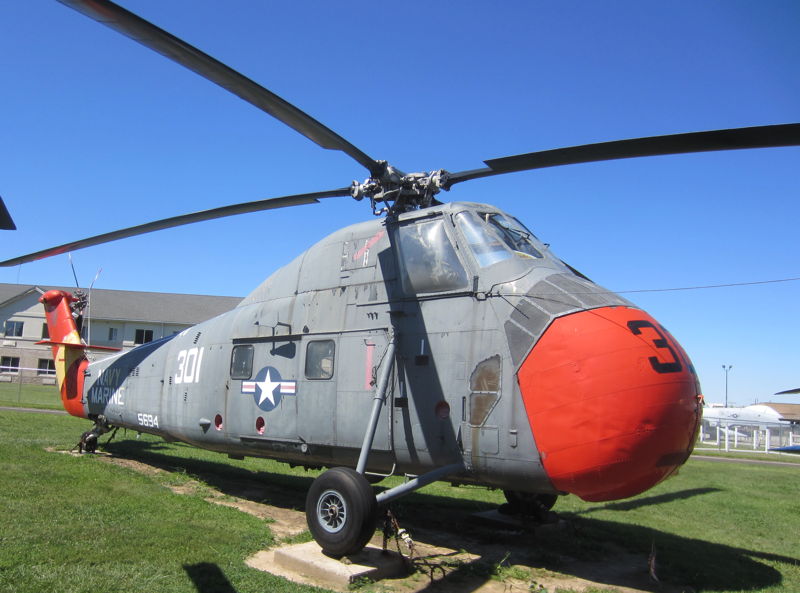
Sikorsky UH-34D “Sea Bat”
Photo 41
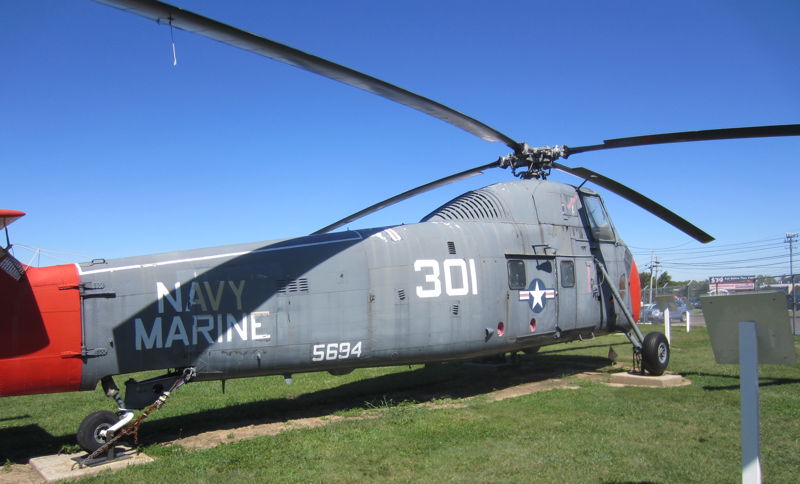
Sikorsky UH-34D “Sea Bat”
Photo 42
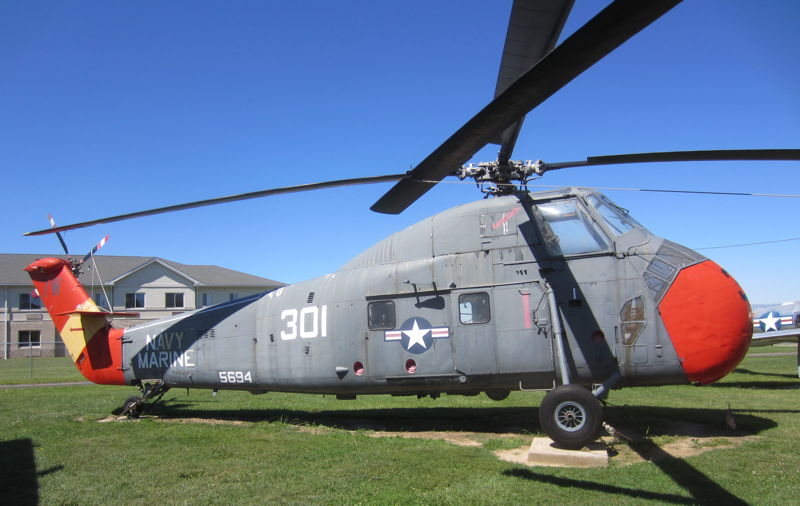
North American FJ-4B "Fury"
The North American FJ-4 Fury was a swept-wing carrier-capable fighter-bomber for the United States Navy and Marine Corps. The final development in a lineage that included the Air Force's F-86 Sabre, the FJ-4 shared its general layout and engine with the earlier FJ-3, but featured an entirely new wing design and was a vastly different design in its final embodiment. First flight October 1954.
The Museum’s FJ-4B is Bureau# 143568. Built in 1956, this aircraft served with Navy and Marine Corps squadrons including ones in California and Hawaii. The last of these planes entered naval service in 1958. Col. Sylvester Lapkewiecz, a member of the Museum, and also former Commanding Officer of VMF 218 at NAS Willow Grove, flew this plane.
Photo 68a
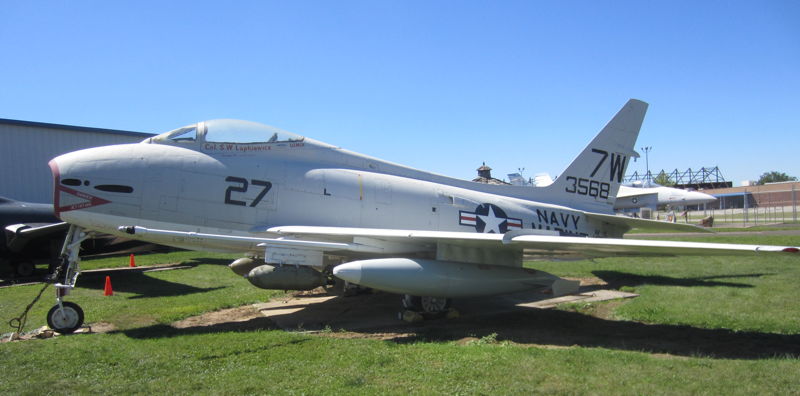
North American FJ-4B "Fury"
Photo 69
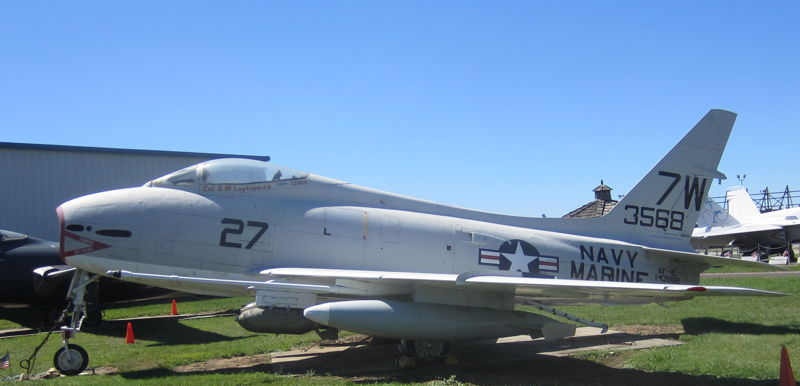
North American FJ-4B "Fury"
Photo 74
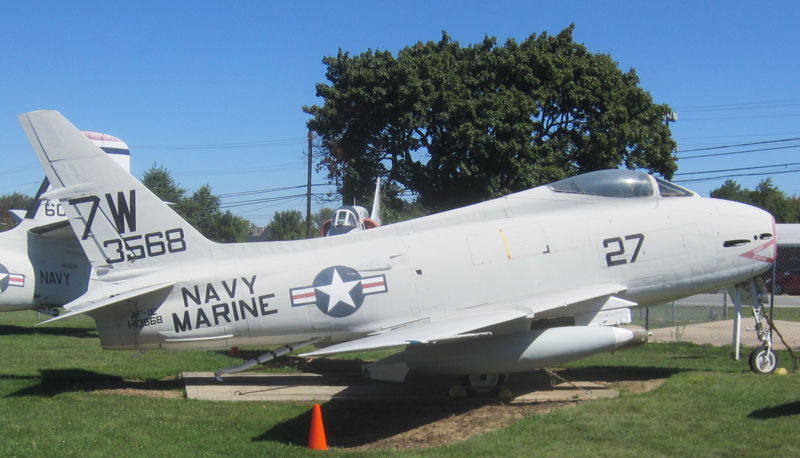
McDonnell-Douglas A4 "Skyhawk"
The Douglas A-4 Skyhawk is a single seat carrier-capable attack aircraft developed for the United States Navy and United States Marine Corps. The delta winged, single-engined Skyhawk was designed and produced by Douglas Aircraft Company, and later by McDonnell Douglas. It was originally designated A4D under the U.S. Navy's pre-1962 designation system. First flight June 1954.
The U.S. Marine Corps received the aircraft on display (Bureau #158182) in October 1971. It saw service with multiple Marine Corps attack squadrons before its final assignment to the Marine Attack Squadron 131 at Willow Grove NAS-JRB. It was stricken from service in 1994 after a collision with Canadian geese damaged the aircraft beyond repair. Following its retirement in 1994, the Museum acquired the aircraft and completed its restoration in July 1996. Together the Museum, volunteers from MAG-49, PA ANG, and NAS-JRB Transient Line Crew completely rebuilt and restored this aircraft.
A-4E/F models had the dorsal "hump".
Photo 64
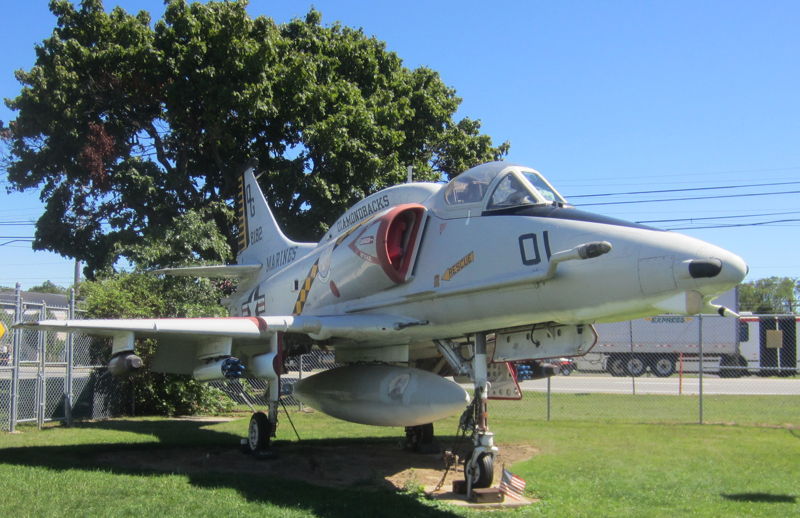
McDonnell-Douglas A4 "Skyhawk"
Photo 66
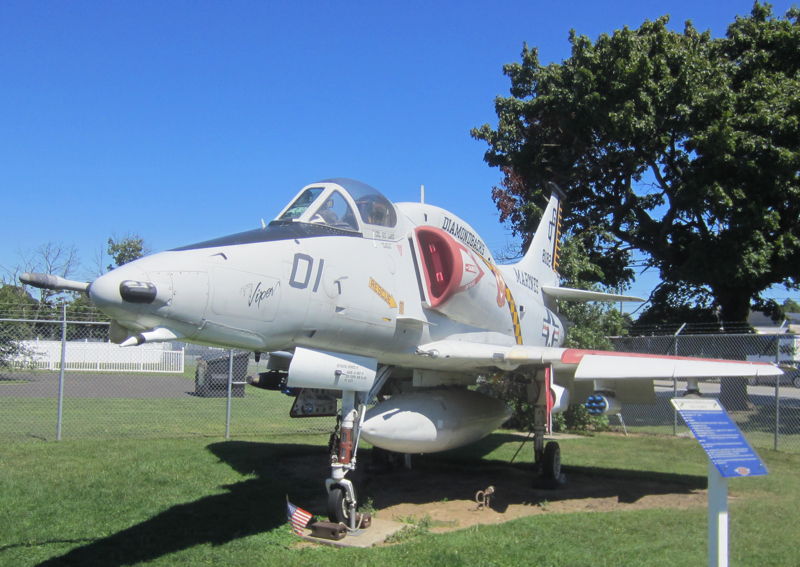
McDonnell-Douglas A4 "Skyhawk"
Photo 75
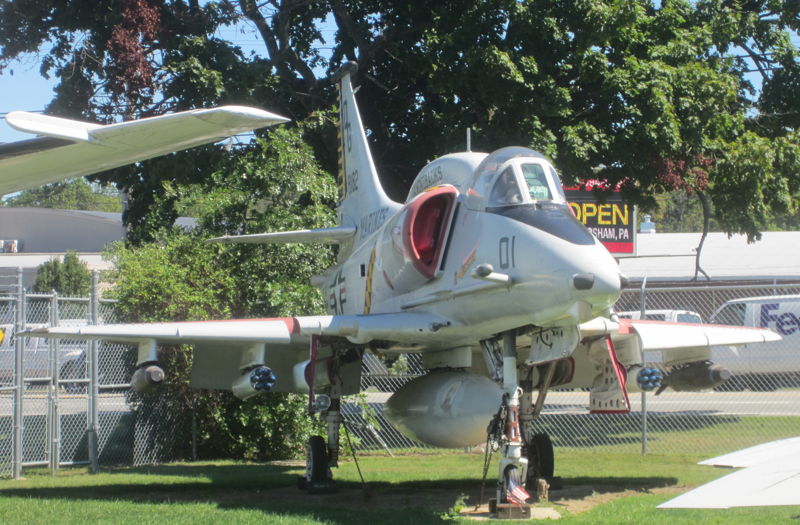
Bell UH-1V Iroquois "Huey"
The Bell UH-1 Iroquois (unofficially Huey) is a military helicopter powered by a single turboshaft engine, with a two-bladed main rotor and tail rotor. The helicopter was developed by Bell Helicopter to meet the United States Army's requirement for a medical evacuation and utility helicopter in 1952, and first flew on 20 October 1956. Ordered into production in March 1960, the UH-1 was the first turbine-powered helicopter to enter production for the United States military, and more than 16,000 have been produced worldwide. First flight October 1956.
The first combat operation of the UH-1 was in the service of the U.S. Army during the Vietnam War. The original designation of HU-1 led to the helicopter's nickname of Huey. In September 1962, the designation was changed to UH-1, but "Huey" remained in common use. Approximately 7,000 UH-1 aircraft saw service in Vietnam.
The Museum’s UH-1V is Bureau# 68-16614. The Army received over 3,500 of these aircrafts for a variety of uses including medical evacuation such as our aircraft on display. The aircraft on display entered service in 1968 and served until the 1990s. The Museum acquired the aircraft in the 1990s and restored in 2001.
Photo 38
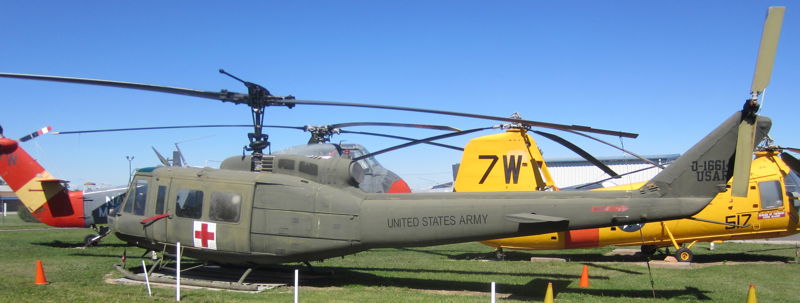
Bell UH-1V Iroquois "Huey"
Photo 39
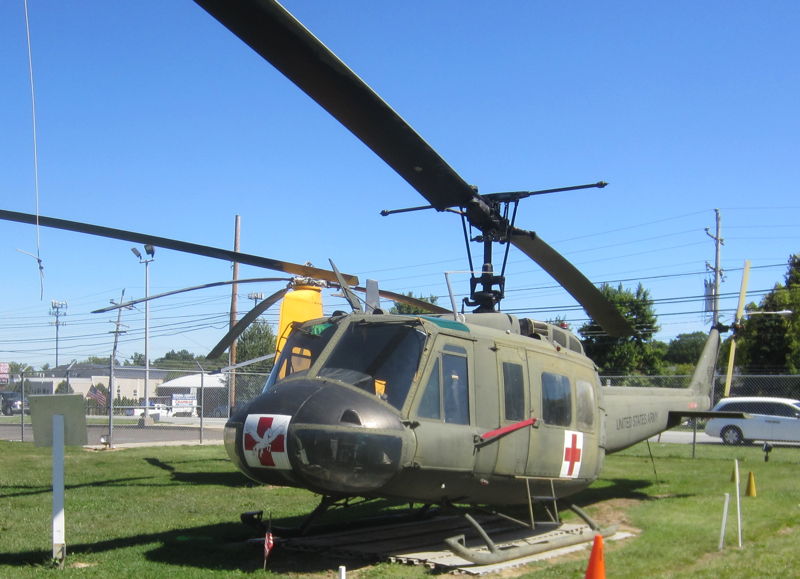
Fairchild-Republic A10 "Thunderbolt II"
The Fairchild Republic A-10 Thunderbolt II is an American twin-engine, straight-wing jet aircraft developed by Fairchild-Republic in the early 1970s. It is the only United States Air Force production aircraft designed solely for close air support, including attacking tanks, armored vehicles, and other ground targets with limited air defenses. First flight May 1972.
The A-10 “Thunderbolt II” had deadly effects during the 1991 Gulf War and in Iraq and Afghanistan following the September 11th attacks as a close-support and anti-tank aircraft. The aircraft is also known as the Warthog. The A-10 on display (Bureau# 76-0516) began its service with the 111th Fighter Wing, PA Air National Guard, in 1992 and designated as a weapons load trainer. The Museum acquired the aircraft in June 2011 and in April 2012 it was relocated from the PA Air National Guard’s display to its current location behind the museum.
Photo 50
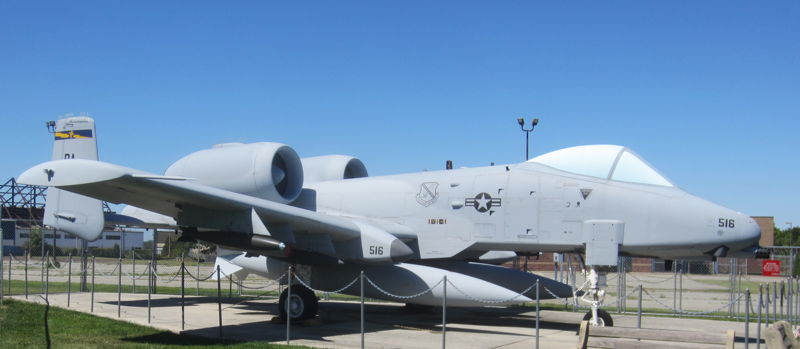
Fairchild-Republic A10 "Thunderbolt II"
Photo 51
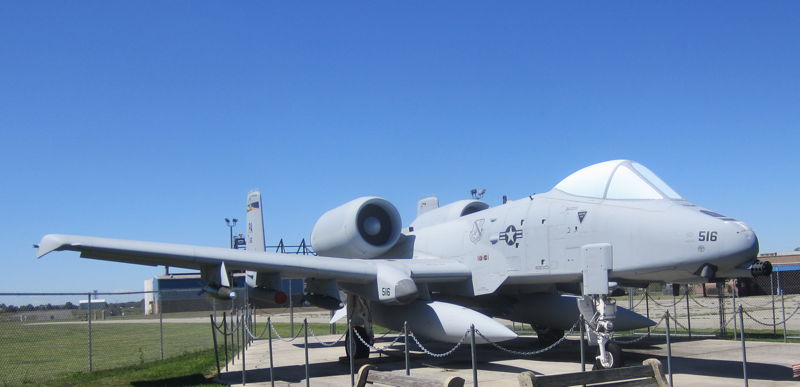
Fairchild-Republic A10 "Thunderbolt II"
Photo 78
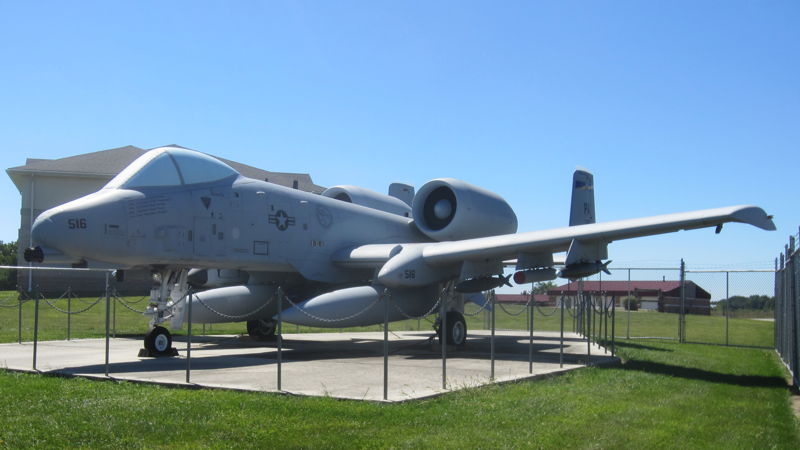
Fairchild-Republic A10 "Thunderbolt II"
Photo 79
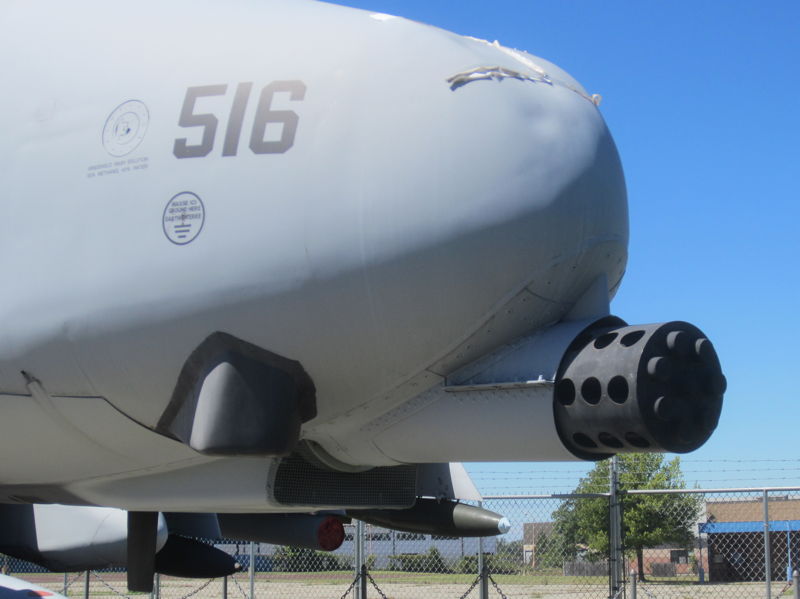
McDonnell-Douglass F/A-18A "Hornet"
The McDonnell Douglas (now Boeing) F/A-18 Hornet is a twin-engine supersonic, all-weather carrier-capable multirole combat jet, designed as both a fighter and attack aircraft (F/A designation for Fighter/Attack). Designed by McDonnell Douglas and Northrop, the F/A-18 was derived from the latter's YF-17 in the 1970s for use by the United States Navy and Marine Corps. The Hornet is also used by the air forces of several other nations. The U.S. Navy's Flight Demonstration Squadron, the Blue Angels, has used the Hornet since 1986. First flight November 1978.
The F/A-18 entered service in 1983 with a Marine fighter/attacker squadron. The aircraft on display (Bureau# 162436) began its service with the Navy on 4 June 1985 as the 183rd F/A-18 built. It served in various locations with its last assignment with Marine fighter attack squadron (VMFA-321) at Naval Air Facility Washington, DC. In late 2003, the aircraft arrived at NAS-JRB Willow Grove and formally stricken from Navy/Marine Corps inventory. The aircraft markings are from VFA-203, the Blue Dolphins, out of Atlanta, GA. In 2006, the Museum officially acquired the aircraft.
Photo 55a
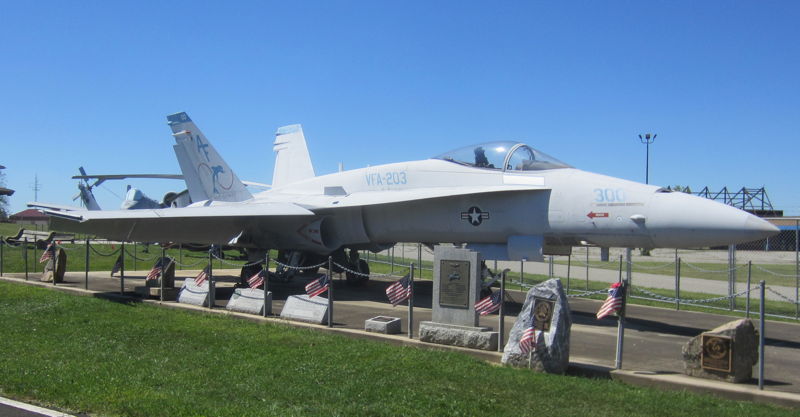
McDonnell-Douglass F/A-18A "Hornet"
Photo 57a
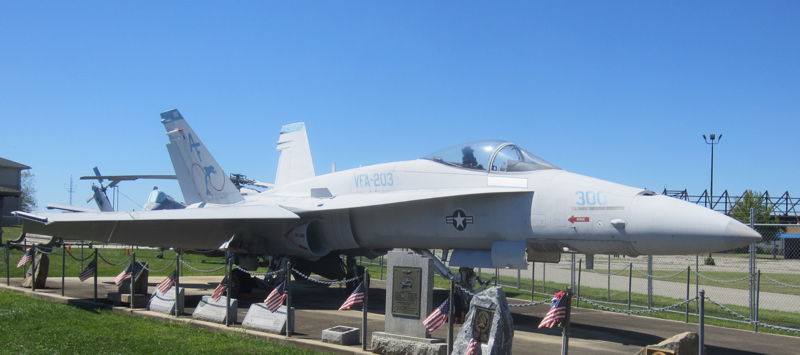
McDonnell-Douglass F/A-18A "Hornet"
Photo 61
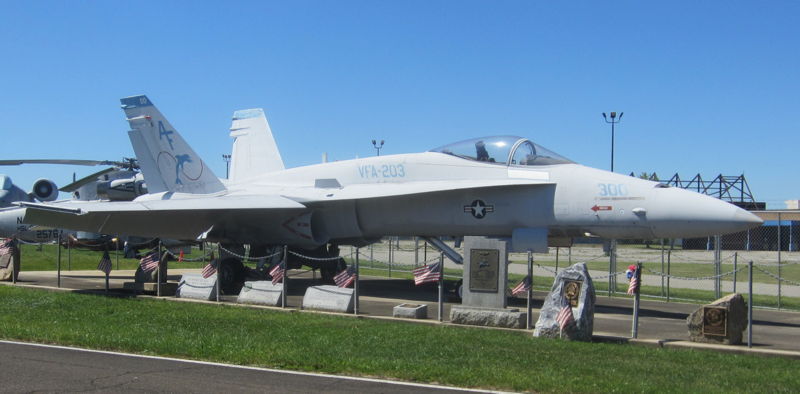
McDonnell-Douglass F/A-18A "Hornet"
Note that engines are missing.
Photo 56a
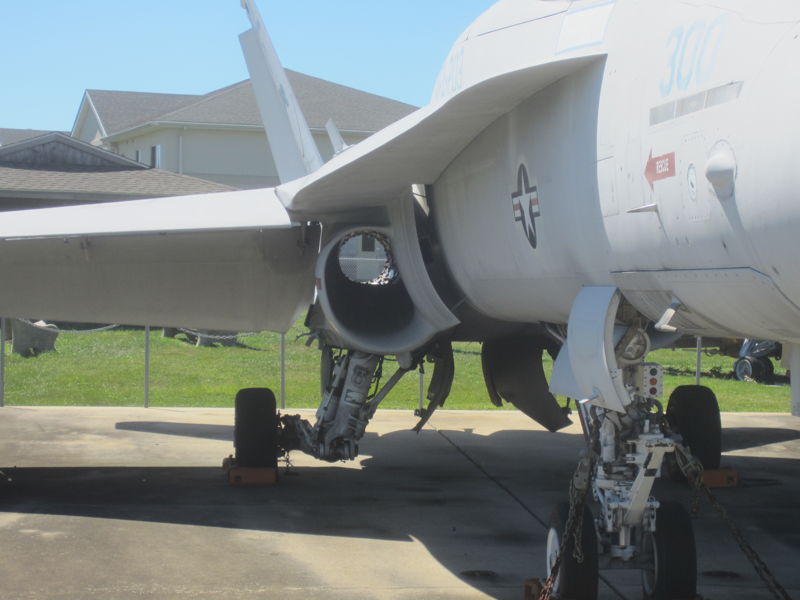
Kaman SH-2G “Sea Sprite”
The Kaman SH-2G Super Seasprite is a ship-based helicopter with anti-submarine, anti-surface threat capability, including over-the-horizon targeting. This aircraft extends and increases shipboard sensor and weapon capabilities against several types of enemy threats, including submarines of all types, surface ships, and patrol craft that may be armed with anti-ship missiles. It was originally developed for the United States Navy in 1980s. First flight April 1985.
The SH-2G's primary missions include anti-submarine and anti-surface warfare, anti-ship missile defense, and anti-ship surveillance and targeting. Secondary missions may include medical evacuation, search and rescue, personnel and cargo transfer, as well as small boat interdiction, amphibious assault air support, gun fire spotting, mine detection and battle damage assessment.
The Museum’s Sea Sprite is Bureau# 162576. This type of aircraft is an all-weather Anti-Submarine Warfare helicopter with additional search and rescue and utility capabilities. This specific aircraft served both as a SH-2F and SH-2G. The Museum acquired the aircraft in 1998. In April 2012, the Museum moved the aircraft to its current location.
Photo 52b
